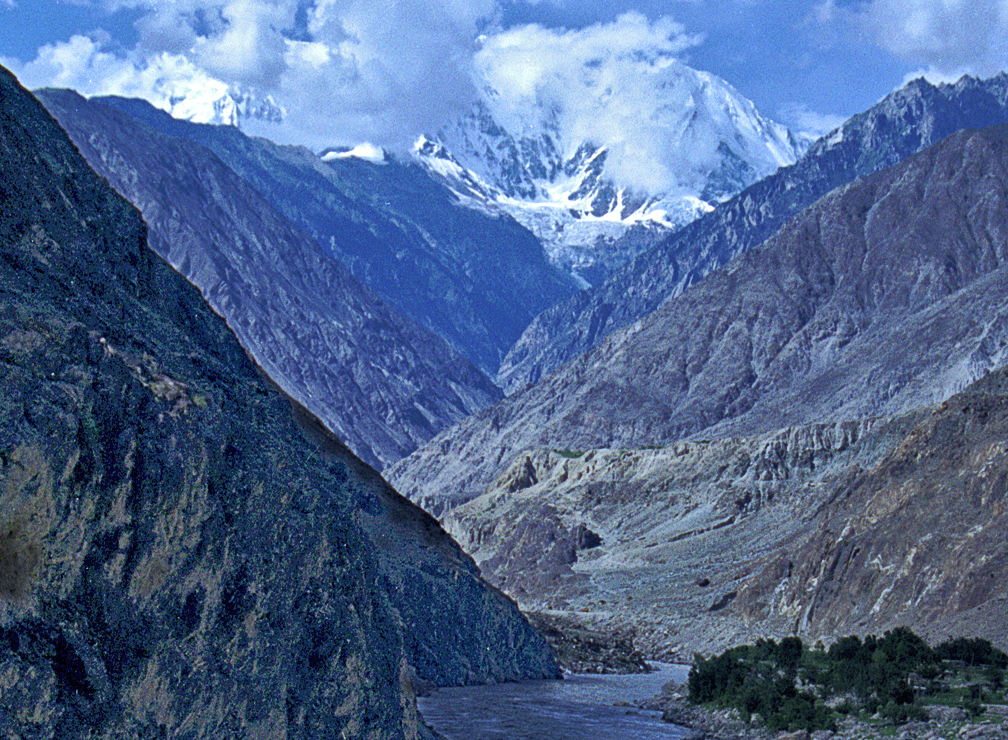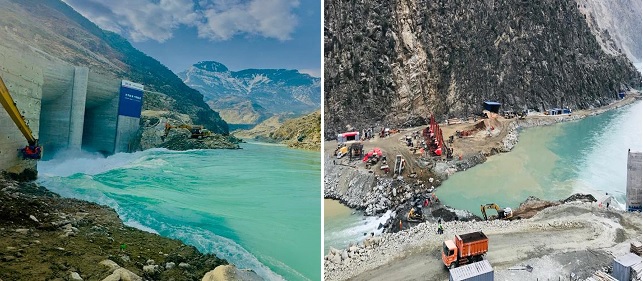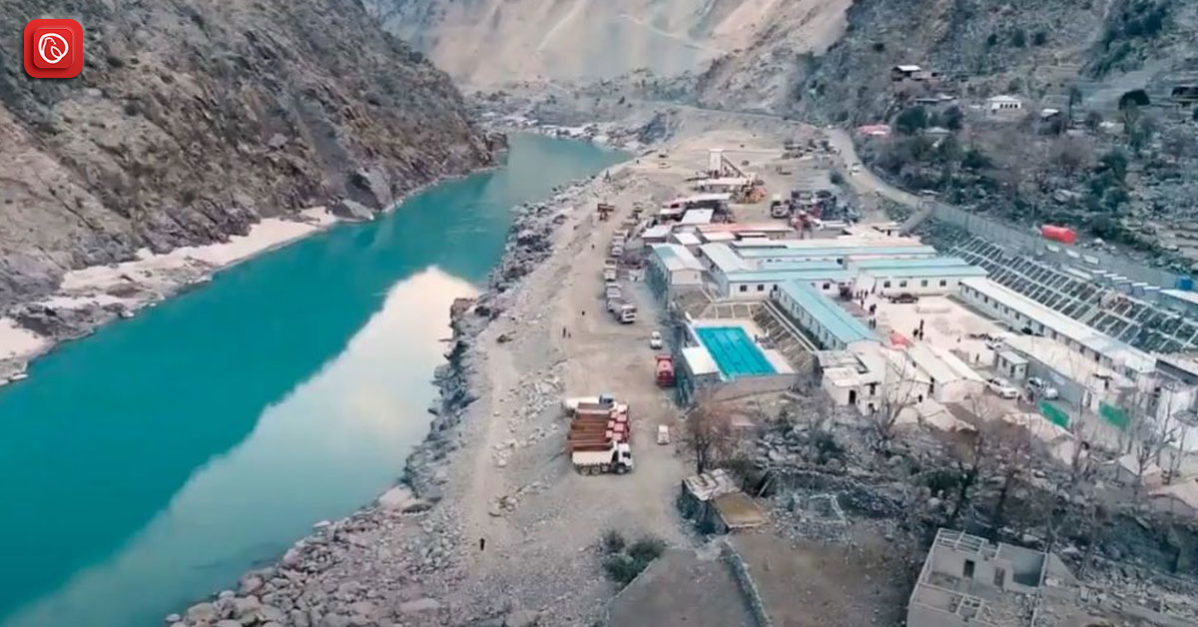Dasu is a region in Pakistan located in the Kohistan District of Khyber Pakhtunkhwa province. It lies along the Indus River and is known for its picturesque landscapes, with lush green valleys and towering mountains. The area is also significant due to the ongoing construction of the Dasu Dam project, which aims to harness the Indus River’s hydroelectric potential to generate electricity for the region.
Additionally, Dasu serves as a gateway to various tourist destinations in northern Pakistan, attracting visitors with its natural beauty and opportunities for outdoor activities such as hiking and camping. Graana.com has prepared an informative guide about Dasu, highlighting its geography, climate, Dasu hydropower project, and other aspects.
Climate of Dasu

Dasu enjoys a climate that reflects its geographical diversity and elevation. Situated along the Indus River, Dasu experiences distinct seasons, each contributing to the region’s unique charm.
Moreover, during the summer months, from May to September, Dasu basks in warm temperatures ranging from 25°C to 35°C (77°F to 95°F). Despite the heat, the area’s higher altitude tempers the intensity, offering a more bearable climate compared to the plains. The summer also brings moderate rainfall, nourishing the surrounding greenery and adding vibrancy to the landscape.
Conversely, with the onset of the monsoon season, typically from July to September, Dasu receives a significant amount of rainfall. The monsoon showers replenish the rivers and streams, sustaining the region’s rich biodiversity. However, the rugged terrain surrounding Dasu can sometimes lead to landslides and road disruptions, highlighting the challenges of the monsoon period.
Additionally, as autumn sets in, Dasu undergoes a picturesque transformation from October to November. The mild temperatures and clear skies create an inviting atmosphere for outdoor activities. The surrounding hillsides adorned in autumnal hues offer breathtaking vistas.
Winter Season in Dasu
Winter blankets Dasu in a serene layer of snow from December to February. Daytime temperatures hover between 0°C to 10°C (32°F to 50°F), while nights dip below freezing. The snow-clad mountains add to the region’s allure.
Moreover, spring brings renewal to Dasu, with March to April marking the transition from winter to summer. The landscape bursts with blooming flowers and budding trees as temperatures gradually rise. Spring’s mild and pleasant weather makes it an ideal time for outdoor excursions and sightseeing, enticing visitors with its natural beauty.
Additionally, throughout the year, Dasu’s climate offers a diverse range of experiences, from the warmth of summer to the tranquillity of winter. Its scenic landscapes, coupled with the changing seasons, make Dasu a captivating destination for travellers seeking adventure and serenity amidst nature’s splendour.
Geography of Dasu

Dasu boasts a geography marked by its rugged terrain and stunning natural landscapes. Positioned along the banks of the Indus River, Dasu is surrounded by towering mountains and verdant valleys, creating a picturesque backdrop for its inhabitants and visitors alike.
The region’s topography is predominantly mountainous, with the mighty peaks of the Himalayas and the Hindu Kush ranges dominating the skyline. These mountains not only add to Dasu’s scenic beauty but also provide vital resources such as freshwater from snowmelt and opportunities for outdoor recreation like hiking and mountaineering.
The Indus River, one of South Asia’s longest rivers, flows through Dasu. Its waters are utilized for various purposes, including irrigation for agriculture and hydroelectric power generation through projects like the Dasu Dam.
In addition to its natural waterways, Dasu is home to numerous smaller rivers, streams, and tributaries that crisscross the region, nourishing the surrounding vegetation and supporting diverse wildlife.
Demography and Language
The demography of Dasu reflects its diverse cultural and ethnic composition, with various communities residing in the region. While specific demographic data may vary, the population consists of Pashtun and Kohistani ethnic groups, with smaller populations of other ethnicities such as Gujjar, Punjabi, and Balti.
Pashto and Kohistani are the primary languages spoken in Dasu, reflecting the linguistic diversity of the area. Pashto, belonging to the Indo-Iranian branch of the Indo-European language family, is widely spoken by the Pashtun community and serves as a means of communication in daily life, commerce, and social interactions.
Kohistani languages, a group of Dardic languages, are also prevalent among the Kohistani ethnic group. These languages include various dialects such as Torwali, Indus Kohistani, and Bateri, which are spoken by different communities within the Kohistan region, including Dasu.
Additionally, Urdu, Pakistan’s national language, is understood and spoken by many residents of Dasu, particularly in formal and administrative settings and in interactions with individuals from other regions of the country.
Dasu Hydropower Project

The Dasu Hydropower Project is a monumental endeavor to transform Pakistan’s energy landscape. Situated strategically 7 kilometres upstream of Dasu Town, this dam is a renewable energy source for sustainable development. It is one of the under construction dams in Pakistan.
Salient Features of the Dasu Hydropower Project
The following table highlights the key attributes of the Dasu Hydropower Project:
| Dam Height | 242 m | |
| Dam Type | RCC Gravity Dam | |
| Design Discharge | 2,600 m3/sec | |
| Installed Capacity | 4,320 MW (Stage-I: 2,160 MW) | |
| No. of Units | 12 Nos. Francis Turbines | |
| Annual Energy | 21,485 GWh | |
| Consultants
|
DHC JV, M/s Nippon Koei (Japan) Lead Firm M/s Dolsar (Turkey) with local sub-consultants of M/s DMC, M/s NDC & M/s PES (Consultancy Services for Construction Supervision & Management Support) |
|
| Contractors | M/s China Gezhouba Group Company (CGGC) (Main Works Contractor) | |
| Commencement Date (Stage-I) | June 23, 2017 | |
| Completion Date (Stage-I) | As per PC-I March 2020 / Expected May 2027 (delayed due to land & security issues) May 2026 (COD) (1st Unit Commissioning) |
|
Financial Status
The financial status of the Dasu Hydropower Project is as follows:
| Financial Status (Rs. Million) | Local | Foreign |
| PC-I Stage-I Cost (Nov 2019) (due to revised Land Cost) | 292,432.610 | 218,547.500 |
| PSDP Allocation 2022-2023 | 55,383.000 | 3,000.000 |
Project Overview
The Dasu Hydropower Project is a run-of-river initiative on the Indus River, boasting a total installed capacity of 4,320 MW distributed across two stages. Each stage comprises six generating units, capable of producing 2,160 MW, making it one of Pakistan’s flagship energy projects.
Timeline of Dasu Dam Project

In 2001, the proposal for the Dasu dam was officially approved as part of Pakistan’s Vision 2025 program. Following this approval, a comprehensive feasibility study was conducted and completed in 2009, laying the groundwork for further development.
Fast forward to March 29, 2014, when the Executive Committee of the National Economic Council approved the first stage of the project. With an estimated cost of $4.278 billion, this stage marked a significant milestone toward realizing the vision of the Dasu Dam. The groundbreaking ceremony, graced by the presence of former Prime Minister Nawaz Sharif, took place on June 25, 2014, signifying the commencement of tangible progress.
Additionally, contracts for preparatory works were swiftly awarded in the first half of 2015, setting the stage for early construction activities that commenced in June 2017. These preparatory efforts paved the way for the subsequent phases of development, laying the foundation for the ambitious undertaking.
2018 Onwards
The main civil works of the project kicked off in February 2018, spearheaded by China Gezhouba Group Company Limited. Notably, work on the water diversion tunnel began in December 2018, marking a crucial milestone in the project’s timeline.
November 2019 witnessed another significant development as WAPDA signed a contract worth Rs52.5 billion with a Chinese joint-venture for electro-mechanical works. This pivotal contract encompassed the design, supply, and installation of six 360 MW turbines, along with their generators and transformers, for the first stage of the project.
Moreover, as of December 2020, construction activities across various fronts have been in full swing. Major endeavors include progress on the Main Civil Works, including constructing diversion tunnels, the underground powerhouse, and access tunnels.
Additionally, efforts to relocate the Karakoram Highway, establish Project Colony, set up a 132 kV transmission line, and establish resettlement sites for affected communities are underway. This underscores the project’s multifaceted approach towards comprehensive development.
Land Acquisition and Preparatory Works
Efforts to acquire the required land for the project have been underway, with a total of 9,917 acres earmarked for various purposes. To date, significant progress has been made, with 633.78 acres acquired and possession handed over to contractors.
Moreover, preparatory works, including the relocation of the Karakoram Highway, construction of access roads, and installation of a 132 kV transmission line, are already in progress.
Main Civil Works
China Gezhouba Group Company Limited has been entrusted with the main civil works, which commenced in February 2018. These works encompass the construction of diversion tunnels, an underground powerhouse, access tunnels, and other essential infrastructure critical to the project’s success.
Financial Structure
The Dasu Hydropower Project benefits from a diverse funding structure involving both domestic and international sources. Agreements with the World Bank, local commercial banks, and foreign commercial banks have been established to secure the necessary funds for project implementation.
Project Status
The physical Progress of various contracts is listed below:
| Contract Package | Contractor / Name of Contract | Progress / Status |
| MW-01 | Construction of RCC Dam and Allied Hydraulic Structures. M/s China Gezhouba Group Co. Ltd. (CGGC). |
18.40% |
| MW-02 | Construction of U/Ground Powerhouse and Allied Hydraulic Structures. M/s China Gezhouba Group Co. Ltd. (CGGC). |
7.40% |
| KKH-01 | Construction of Right Bank Access Road. M/s China Civil Engineering Construction Corporation (CCECC). |
32.40% |
| RAR-01 | Construction of Right Bank Access Road. M/s China Civil Engineering Construction Corporation (CCECC). |
97.90% |
| TL-01 | Construction of 132 kV transmission line from Dubair to Dasu. M/s Power Construction Corporation of China Ltd. (PCCC). |
88.90% |
| LBRV-11 | Resettlement Site (M/s Zhongmei Engineering Group Ltd.) | 37.80% |
| LBRV-12 | Resettlement Site (M/s Zhongmei Engineering Group Ltd.) | 23.20% |
| PCI-01R | Project Colony & Infrastructure (M/s CGICOP (China)) | 67.30% |
| Dasu-RV | Resettlement Site (M/s Khyber Grace (Pvt.) Ltd.) | 39.20% |
| Dasu (EM-01) | Electro-Mechanical Works (M/s GE-PC JV) | 4.40% |
| RAR-02 | Construction of Right Bank Access Road from Dam site to Uttergah M/s China Gezhouba Group Company Ltd. (CGGC). |
1.10% |
| KKH-02 | (Relocation of Karakoram Highway RD 25+200 to RD 62+213). M/s China Gezhouba Group Company Ltd. (CGGC). |
1.00% |
Latest Developments of Dasu Hydropower Project

The ongoing construction of the Dasu Hydropower Project along the Indus River in Pakistan marks a significant achievement. One of the two diversion tunnels, crucial for river diversion, has been completed. Spearheaded by Pakistan’s Water and Power Development Authority (WAPDA), the project is a pivotal component of the nation’s energy strategy. It aims to provide clean and sustainable energy to millions of households.
The first phase involves installing a 2,160 MW hydropower plant, with potential expansion to 4,320 MW in the second phase. Once operational, the Dasu hydropower plant is expected to cater to approximately 4 million households.
Furthermore, the project’s diversion system comprises two tunnels located upstream of Dasu town in the Upper Kohistan district of Khyber Pakhtunkhwa. Tunnel A and Tunnel B. Tunnel B, now fully constructed, facilitate the diversion of the Indus River’s water during the lean flow season.
Conversely, with a length of 1.33 kilometers, width of 20 meters, and height of 23 meters, tunnel B effectively channels the river’s flow. This enables the commencement of construction activities on the starter dam for the main project.
Tunnel A
Tunnel A, measuring 1.5 kilometers in length and mirroring the dimensions of tunnel B, is expected to be operational by mid-April. Once operational, tunnel A will accommodate increased water flows during the high-flow season.
Also, the ongoing construction of Stage I is poised to generate 12 billion units of energy annually. Electricity generation is anticipated to commence by 2026. Additionally, Stage II, boasting a capacity of 2,160 MW, is projected to contribute 9 billion units to the national grid upon implementation.
Moreover, as a vital component of the China-Pakistan Economic Corridor (CPEC), a flagship project of the Belt and Road Initiative, the Dasu Hydropower Project exemplifies the collaborative efforts between China and Pakistan in promoting sustainable development and connectivity across the region.
Conclusion
Dasu is a region of beauty and promise in Pakistan. Its diverse climate, ranging from warm summers to snow-covered winters, creates a tapestry of experiences for visitors and locals alike. Beyond its natural allure, Dasu is also home to ambitious projects like the Dasu Hydropower Project. It symbolizes the nation’s commitment to sustainable energy and economic development.
Conversely, as the Dasu Hydropower Project nears completion, it represents more than just a source of electricity—it embodies the collective efforts of communities and nations toward a brighter, greener future. With each milestone achieved, Dasu emerges as a beacon of hope and progress. This showcases the potential for collaboration and innovation to transform landscapes and lives.
For more informative blogs, visit the Graana Blog.




